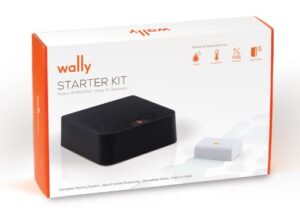Getting started in real estate investing can present you with a whole new vocabulary. Luckily, we’ve compiled the following list of industry terms which you are likely to hear if you jump into the hard money/ real estate investing space.
Terms:
After Repair Value (ARV) – This is an estimate, based on comparable properties near the subject property and the value of the home after it has been renovated using the rehab list and budget.
Appraisal – A professional assessment to determine the estimated current market value of the property as well as the worth after the renovations are completed.
As-is Value – The value of a property as it exists now, without any renovations or improvements.
Bridge Loan – Short term financing which bridges the gap until another financing, typically traditional financing, is acquired.
Collateral – This is a property or other assets that a borrower offers as a way for a lender to secure the loan. If the borrower stops making the promised loan payments, the lender can seize the collateral to recoup its losses. Hard Money Lending is asset/ collateral-based lending.
Commercial Use – A property that is only for business investing purposes and will not have the owner of the property living in it.
Default – Failure to comply with the terms of an agreed-upon loan, including timely repayment.
Distressed Properties – Properties that are in extremely poor condition (possibly even in foreclosure). These properties are great contenders for fix and flip investments.
Draw Schedule – A -re-payment plan for construction or renovation projects. Typically, an inspector will determine the scope of work completed using the rehab list, and the lender will distribute the funds based on that value of the work completed.
Exit Strategy – How the borrower plans to pay off the loan. It’s also important to the lender that the project will also turn a profit. Examples of exit strategies include selling the property and refinancing traditionally.
Fixed-Rate Loan – A fixed-rate loan is a loan in which the interest rate or scheduled principal and interest payment amount does not change throughout the course of the loan.
Guarantor – A person who agrees to take responsibility the loan and for any remaining owed amounts on a loan should there be any.
Hard Money Lender – Hard money loans are a specific type of asset-based loans that are secured by real estate collateral. Hard money loans are generally given through private investors or companies.
Interest Rate – The amount (a percentage) that a borrower has agreed to pay a lender as the price of borrowing money. Typical interest rates for Hard Money Loans are between six and thirteen percent.
Loan Management System (LMS) – The intuitive Broker Loan Management System from Bridge Loan Network digitalizes the process enabling brokers to upload and store their client’s information once for multiple lenders to review.
Loan Origination System (LOS) – Loan origination is the process where a borrower applies for a loan, and a lender processes that application. Origination generally includes all the steps from taking a loan application up to disbursal of funds. The loan origination system is an online portal where lenders can process loans, upload documents and communicate with the broker or borrower.
Loan Points – An origination fee. One point is equal to one percent of the principal loan amount. Typically, Hard Money Lenders earn between 1 and 3 points, and brokers can match the lender with points.
Loan-to-Value Ratio (LTV) – The loan amount for the property divided by the appraised market value of the property.
Mixed Use – A property that has both residential and commercial aspects in it.
Prepayment Penalty – A fee added to the loan for paying off the loan before the agreed end date.
REO (Real Estate Owned) – A process where ownership of the property was transferred from an original owner to the owner’s lender through the foreclosure process.
Referral Fee – A fee paid by one Private Money Lender to another for referred business. Referral fees are common for commercial loan transactions between hard money lenders, brokers and investors.
Refinance – Replacing an existing loan with a new one. Typically, investors refinance to get a lower interest rate on their loan and/or to leverage real estate value for cash to invest again.
Return on Investment (ROI) – A measure used to calculate the success of an investment. To calculate ROI, the benefit (or return) of an investment is divided by the cost of the investment. The ROI is expressed as a percentage or a ratio.
Scope of Work – This is an outline of all the renovations scheduled to be completed before the house is sold, as well as their anticipated costs. Typically, this is considered with the renovation list when applying to a Hard Money Lender.


 In our industry, both in the private lending and financial technology industries, client and data protection are top of mind for both the company and customers. This is never more true than when dealing with someone’s book of business and their specific clients they have worked so hard to acquire. This is even more important when working with both someone’s business and personal information.
In our industry, both in the private lending and financial technology industries, client and data protection are top of mind for both the company and customers. This is never more true than when dealing with someone’s book of business and their specific clients they have worked so hard to acquire. This is even more important when working with both someone’s business and personal information. Simply stated, how your lending process is structured holds a significant role in how efficient, compliant and quick your organization is in processing a loan from application to closing.
Simply stated, how your lending process is structured holds a significant role in how efficient, compliant and quick your organization is in processing a loan from application to closing. Many real estate investors are seeing an increasing demand to add technological or “smart” upgrades to their projects. This is attributed to both an increase in desire from prospective tenants or homeowners and to the additional value, these smart upgrades add to the properties.
Many real estate investors are seeing an increasing demand to add technological or “smart” upgrades to their projects. This is attributed to both an increase in desire from prospective tenants or homeowners and to the additional value, these smart upgrades add to the properties.



 A Team from Bridge Loan Network will be exhibiting at the 2018 Real Estate Symposium presented by Green River Capital, Red Bell Real Estate and ValuAmerica. The Real Estate Symposium, which is taking place February 28th through March 2nd at the Grand America Hotel in Salt Lake City, Utah is a nationwide leading conference for REO experts.
A Team from Bridge Loan Network will be exhibiting at the 2018 Real Estate Symposium presented by Green River Capital, Red Bell Real Estate and ValuAmerica. The Real Estate Symposium, which is taking place February 28th through March 2nd at the Grand America Hotel in Salt Lake City, Utah is a nationwide leading conference for REO experts.




